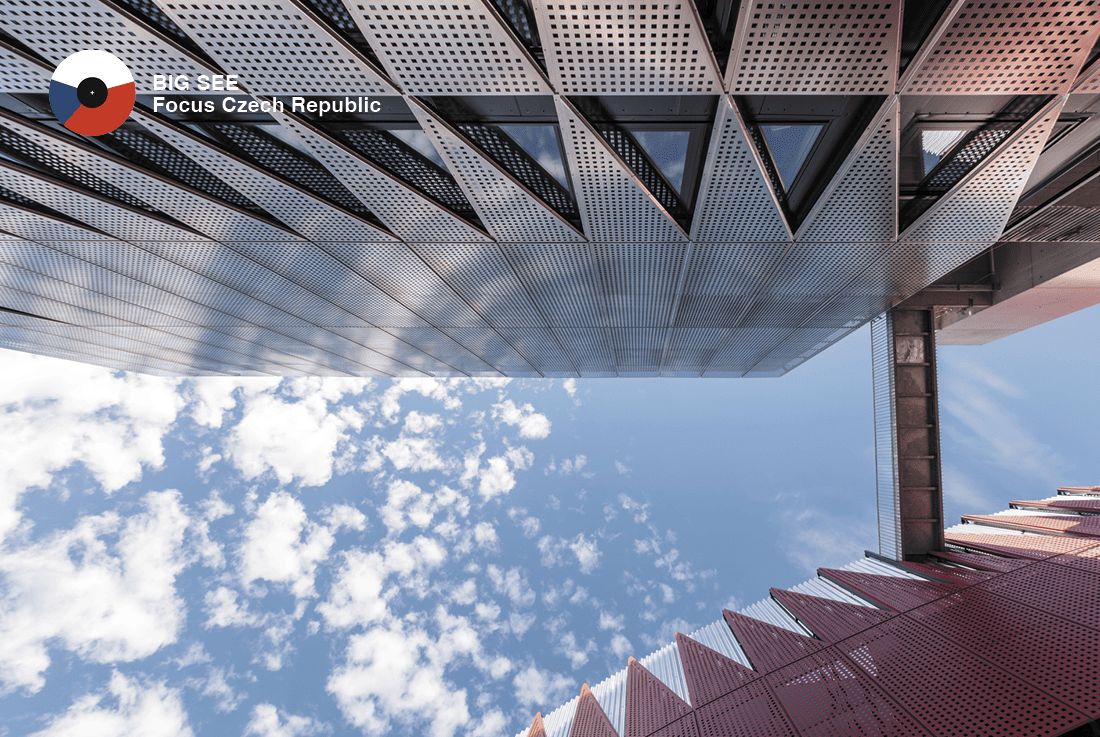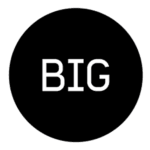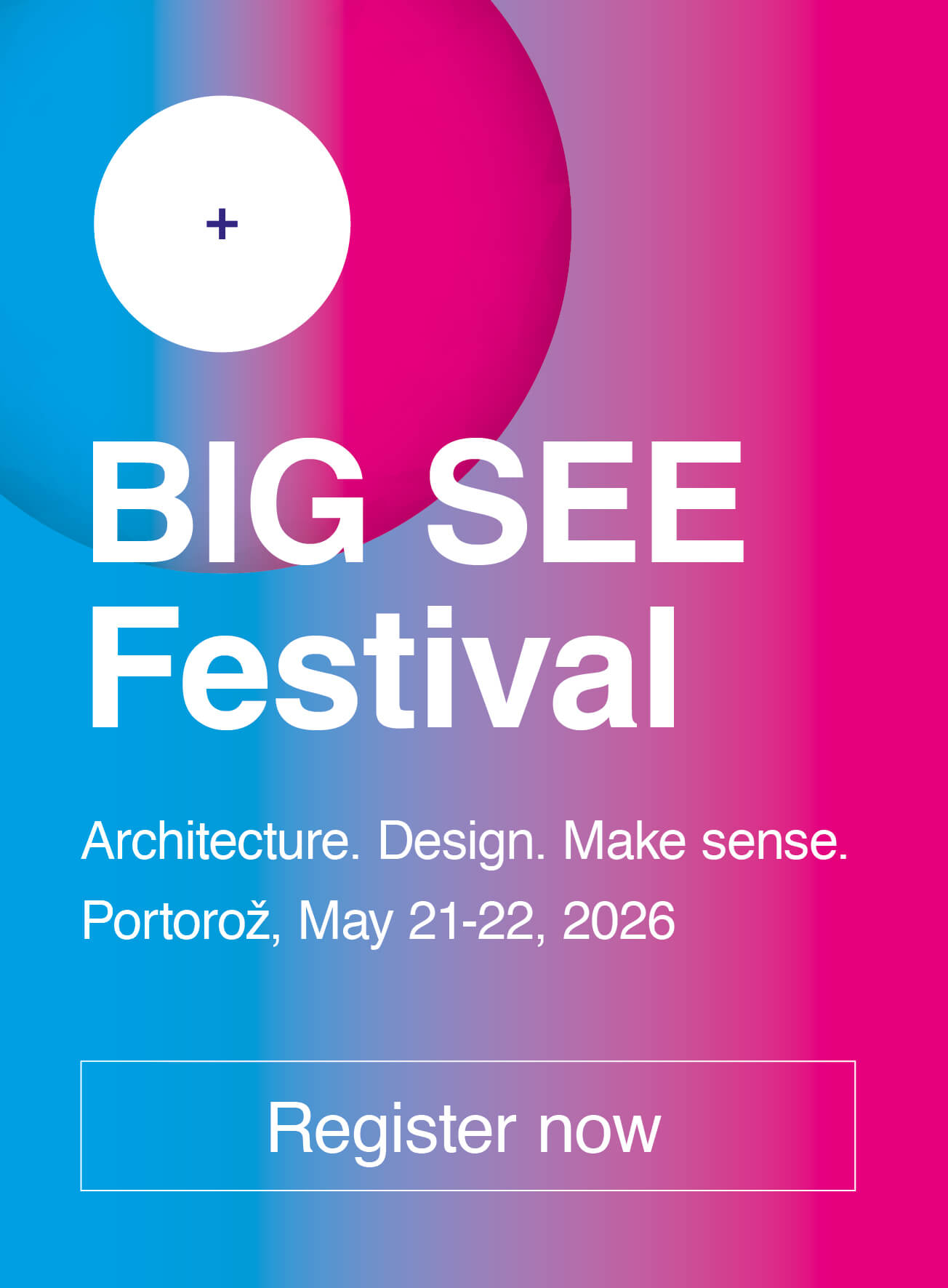3 Questions for Jiri Richter
Arena becomes a catalyst for new social and economic activity, extending the life of Jihlava’s center beyond its current boundaries.
Q: The arena is located directly on the border of Jihlava’s historic center, a place where arenas are rarely built. How did you approach the challenge of designing such a large building so close to the historic city, and how do you see its role in extending the center beyond its traditional boundaries?
A: The City’s decision to keep the arena in the center was one we strongly supported. From the outset, our goal was to integrate the building into the existing urban fabric – respecting the historic context while introducing a contemporary civic landmark. We divided the program into four volumes (two existing and two new), creating permeability and visual connections in all directions. The arena opens toward the adjacent park, the university building, and surrounding streets, forming a new urban campus that supports, rather than competes with, the historic core.
Separating the functions into two new volumes – the main arena and a corner building – was key to achieving this. The arena’s main floor remains open and visually connected to its surroundings, while the corner building houses complementary uses such as a pub, fan shop, accommodation, gym, and a sports hall, ensuring daily activity beyond events. A stepped public plaza bridges the height difference between the street and the park, offering a new gathering space for informal use and city events. The publicly accessible rooftop running track further reinforces this openness, transforming the building into a civic platform.
Through these design decisions, the arena becomes a catalyst for new social and economic activity, extending the life of Jihlava’s center beyond its current boundaries.
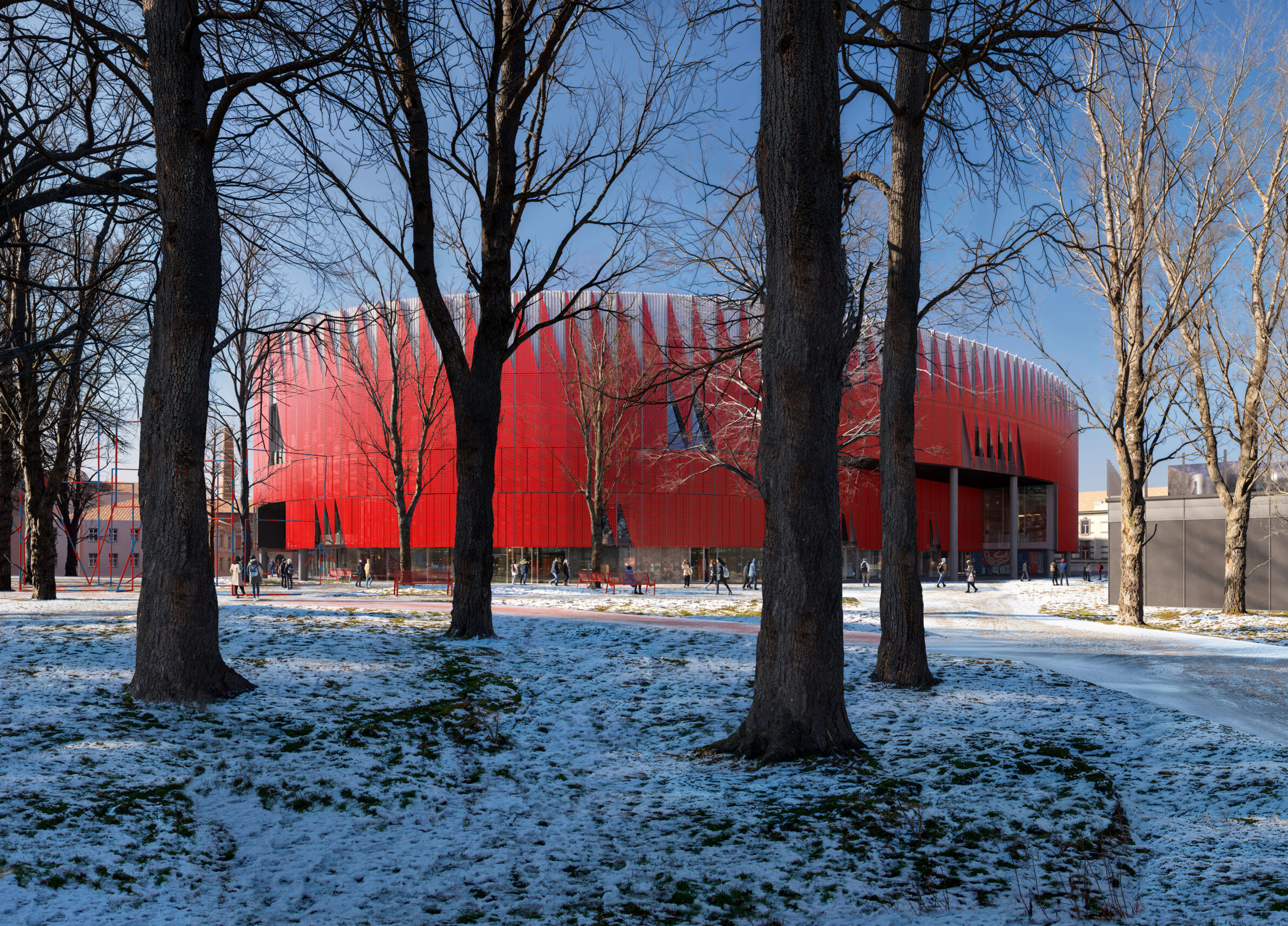
Q: Materials, facade, and structure all communicate with scale and atmosphere. What was your strategy in balancing technical demands, energy performance, and the desire for a civic presence that feels welcoming to both spectators and casual passersby?
A: We approached the arena first and foremost as a civic building – one that should feel approachable and welcoming, while meeting the complex technical demands of a large sports venue. The structural and material palette of exposed concrete, red prefabricated tribunes, and a precisely articulated façade establishes both durability and character. The façade’s angular geometry and crown-like top lend the arena a distinctive form that complements Jihlava’s historic skyline while asserting a strong contemporary presence.
Energy performance was considered from the outset, with strategies including natural ventilation, optimized daylighting, and the reuse of heat from the ice rink. Every design decision aimed to balance efficiency and expression: ensuring that the arena performs at the highest technical standards while offering a spatial experience that engages spectators, visitors, and casual passersby alike.
We approached the arena first and foremost as a civic building – one that should feel approachable and welcoming, while meeting the complex technical demands of a large sports venue.
Q: Public space is central to the project, not just inside but also around the building. How did you imagine the everyday life of these in-between spaces when the arena is not in use, and what role do they play in reconnecting the site with the city?
A: Public spaces around the arena were designed as a natural extension of the city, offering life beyond scheduled events. The large stepped plaza, rooftop running track, and revitalized park invite everyday activity – students, joggers, families, and neighbors can move through, linger, and interact freely. Amenities such as the pub, fan shop, and seating areas activate these spaces, encouraging casual social encounters and spontaneous gatherings. By connecting the arena to the park and surrounding streets, these flexible, accessible areas foster a porous and lively urban environment. In doing so, these public spaces play a crucial role in integrating the arena into city life, transforming it from a single-purpose venue into a vibrant, year-round destination that strengthens the social and cultural fabric of Jihlava.
Public spaces around the arena were designed as a natural extension of the city, offering life beyond scheduled events.
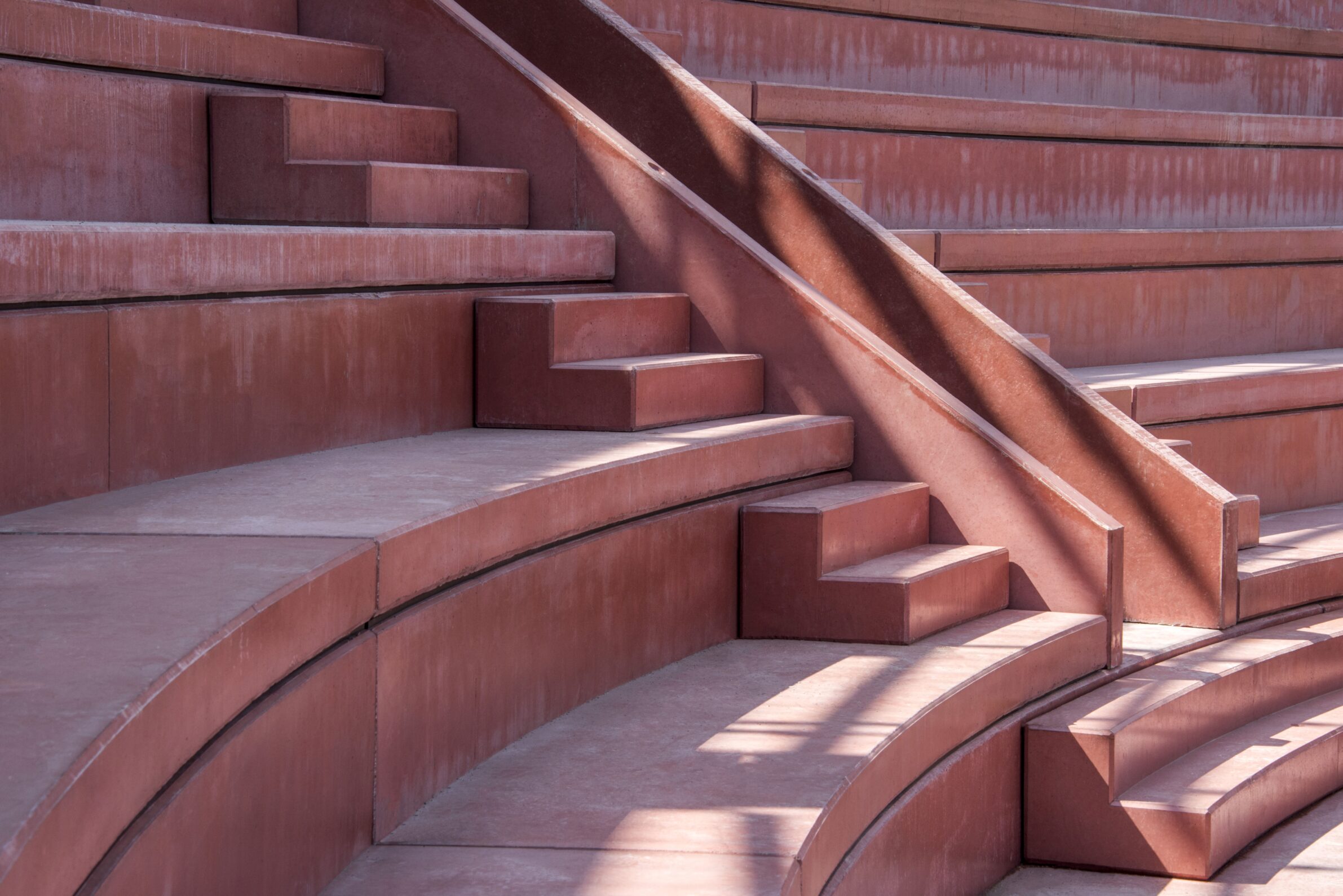
About Jihlava Arena
CHYBIK + KRISTOF (CH+K) has revealed new images of its multi-purpose arena in Jihlava, an ambitious city at the heart of the Czech Republic. The studio’s winning proposal from a 2019 competition to design a sports venue for the local ice hockey team, HC Dukla, is set for completion in autumn 2025 and has reached the important milestone of its characteristic facade being installed.
The arena has a seating capacity of 5,650 and can accommodate crowds for various events beyond ice hockey, transforming into a venue for concerts, large-scale events, exhibitions, and cultural festivals. The arena’s adaptability and multi-functionality are reflective of Jihlava’s reputation as a city of culture, and home to renowned international documentary film festivals.
Ice hockey also has a storied history in the Czech Republic, which is one of the global “Big Six” and won gold at the IIHF World Championship in 2024.
The project will serve as a major catalyst in the urban transformation of Jihlava, bringing investment and energy to the progressive city and its 50,000 inhabitants. Rejecting standard practice to move the venue from its current site into the outskirts, the local municipality’s decision to guarantee the arena remained in the city centre is pivotal to the scheme. Instead, designed as a functional part of Jihlava’s urban fabric, the stadium will animate and regenerate the city’s urban core – driving footfall and supporting local businesses with a diverse mixed-use offering. It is also the environmentally conscious choice, ensuring easy access by public transport and even for many local residents to travel by foot.
The arena’s architecture is sensitively embedded in its surroundings. Focal and expansive public spaces weave between four built structures. A large stepped plaza at the heart of the scheme facing the local university building introduces an inviting meeting place for students and neighbours alike. Two existing buildings accommodate an office and secondary ice field, while two are newly designed – the arena and a mixed-use facility. This new building, at the corner of the complex, has diverse functions: a club shop, Hall of Fame, accommodation, pub, gym and sports hall. It offers sweeping panoramic views of Jihlava and access to the arena’s striking rooftop running track. Guaranteeing a long life span and adaptable future for the site, modular and flexible design principles are embedded from the ground up.
Material choices, and the stadium’s statement red, refer to the region’s heritage architecture. The arena’s striking facade combines angular geometry with a crown-like roof to cement the building as a prominent urban landmark. Staggered seating, or tribunes, made from uniquely prefabricated, curved red-pigmented concrete, shape the arena’s distinguished sense of identity while doubling as a navigational guide – visible from all key public areas, locker rooms, and even the exterior, the colour red always marks the route to the rink at the venue’s core.
Collaboration with artists, craftspeople and creatives of all disciplines has been focal to the conception and delivery of the scheme since the start. Characterful stadium seating is designed in partnership with mmcité while BOMMA has crafted custom integrated lighting within the brickwork of inner public spaces. Four large-scale light installations in food and beverage areas, will reference the industrial and cultural heritage of the Czech region. Revitalisation of the neighbouring park will be delivered by long-time CH+K collaborator, landscape architect Zdeněk Sendler.
The primary investor in the new stadium is the City of Jihlava, with additional funding provided by the Vysočina Region and the state. On completion later this year the stadium will be managed by an independent organisation.
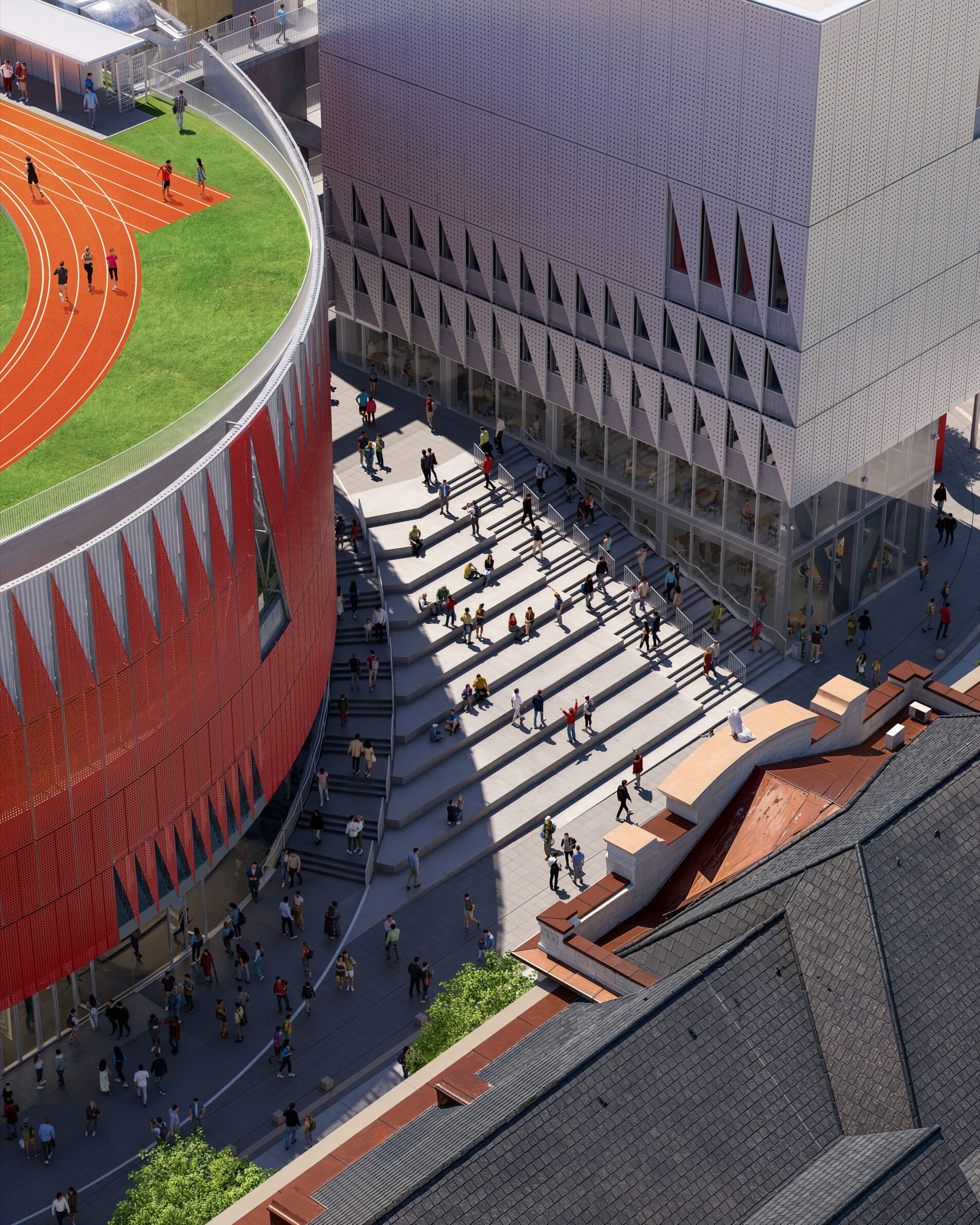
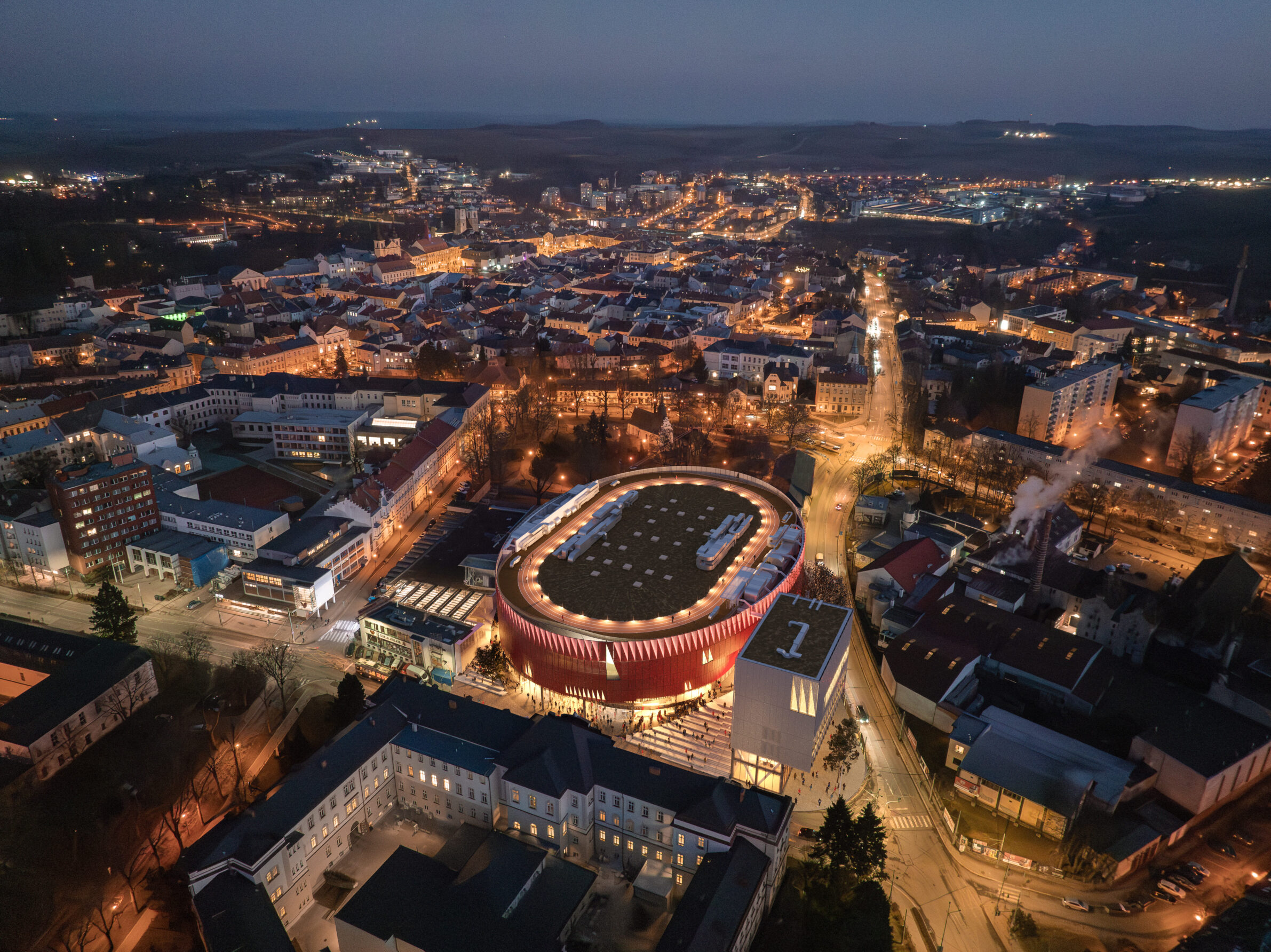
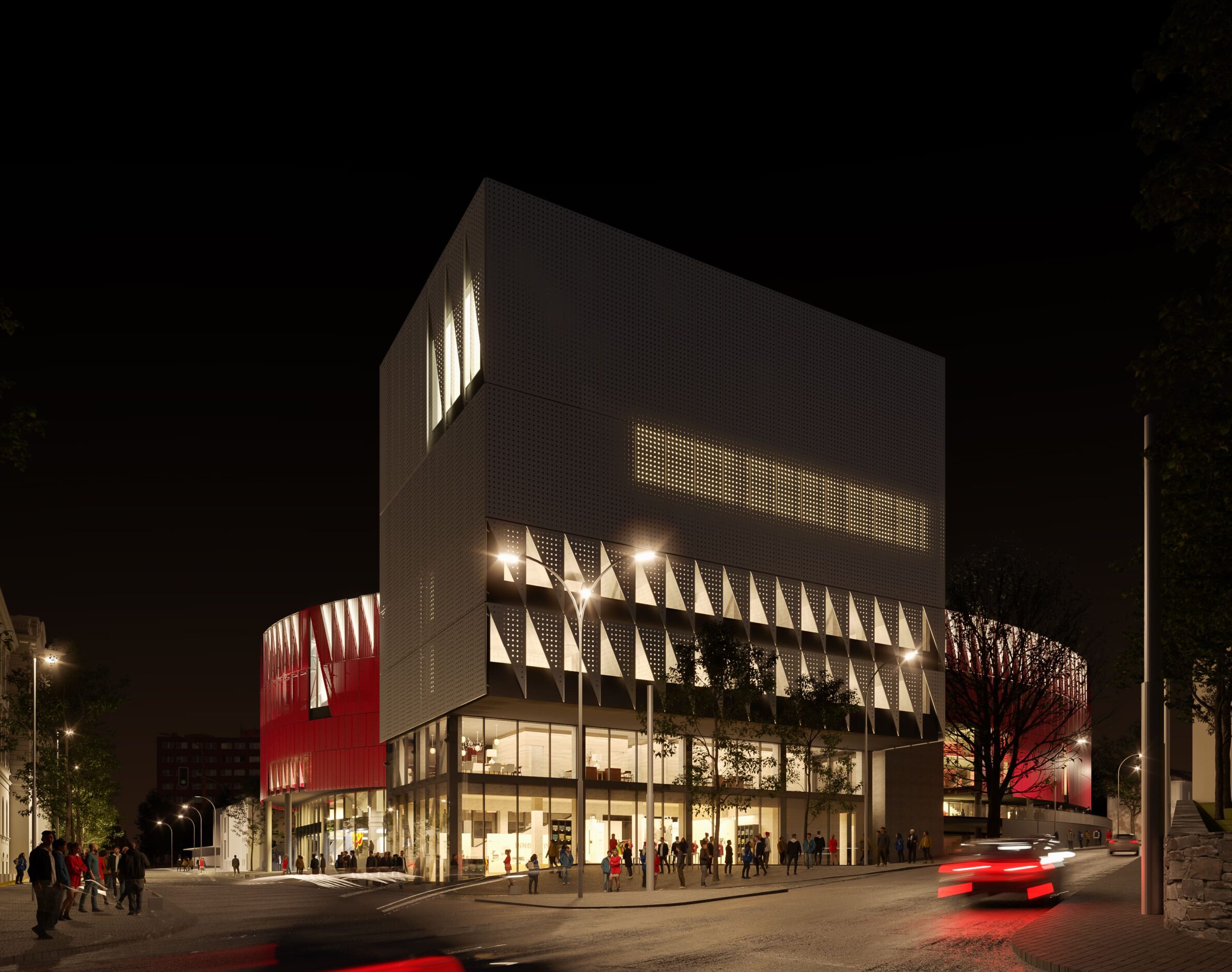
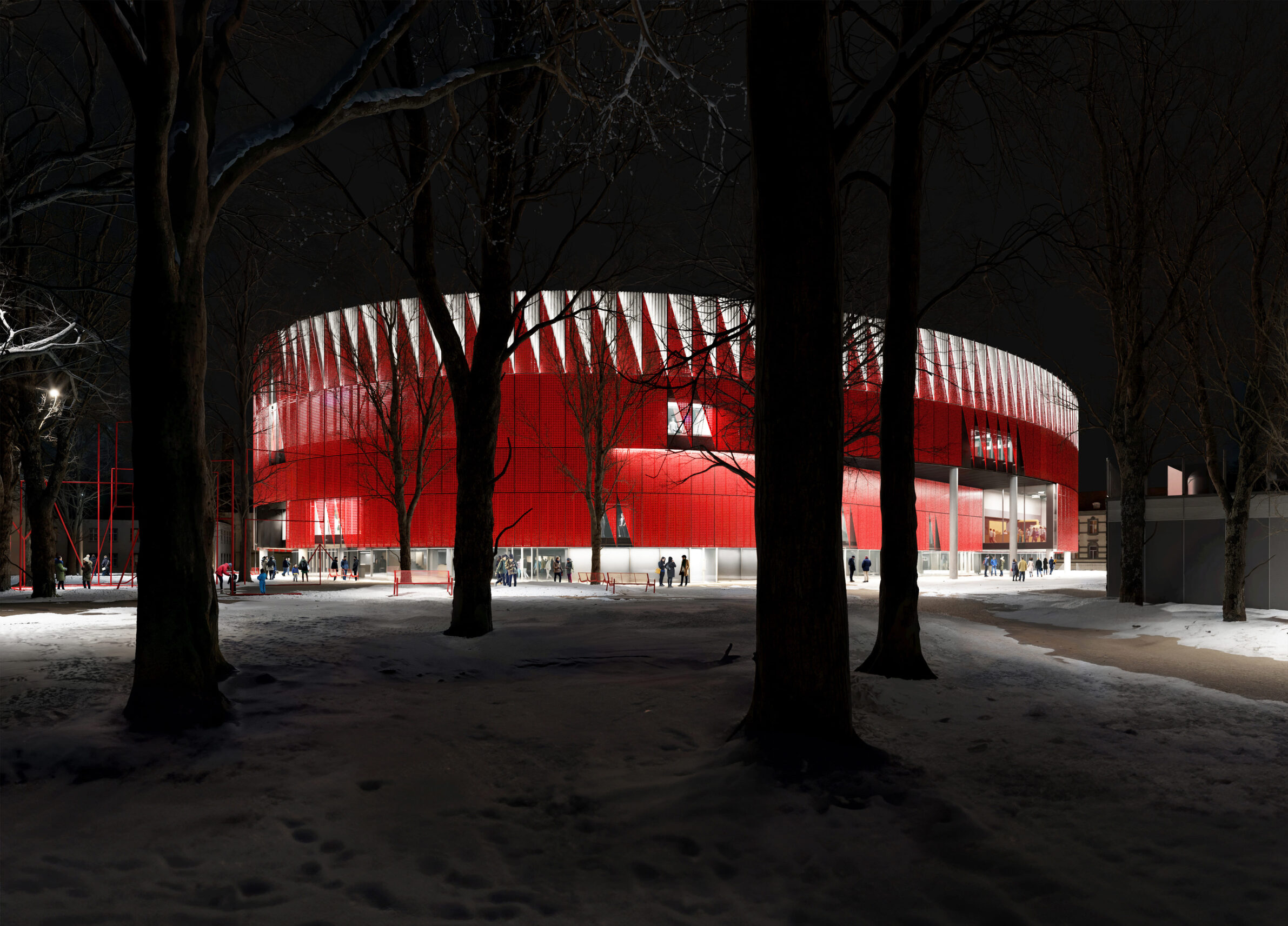
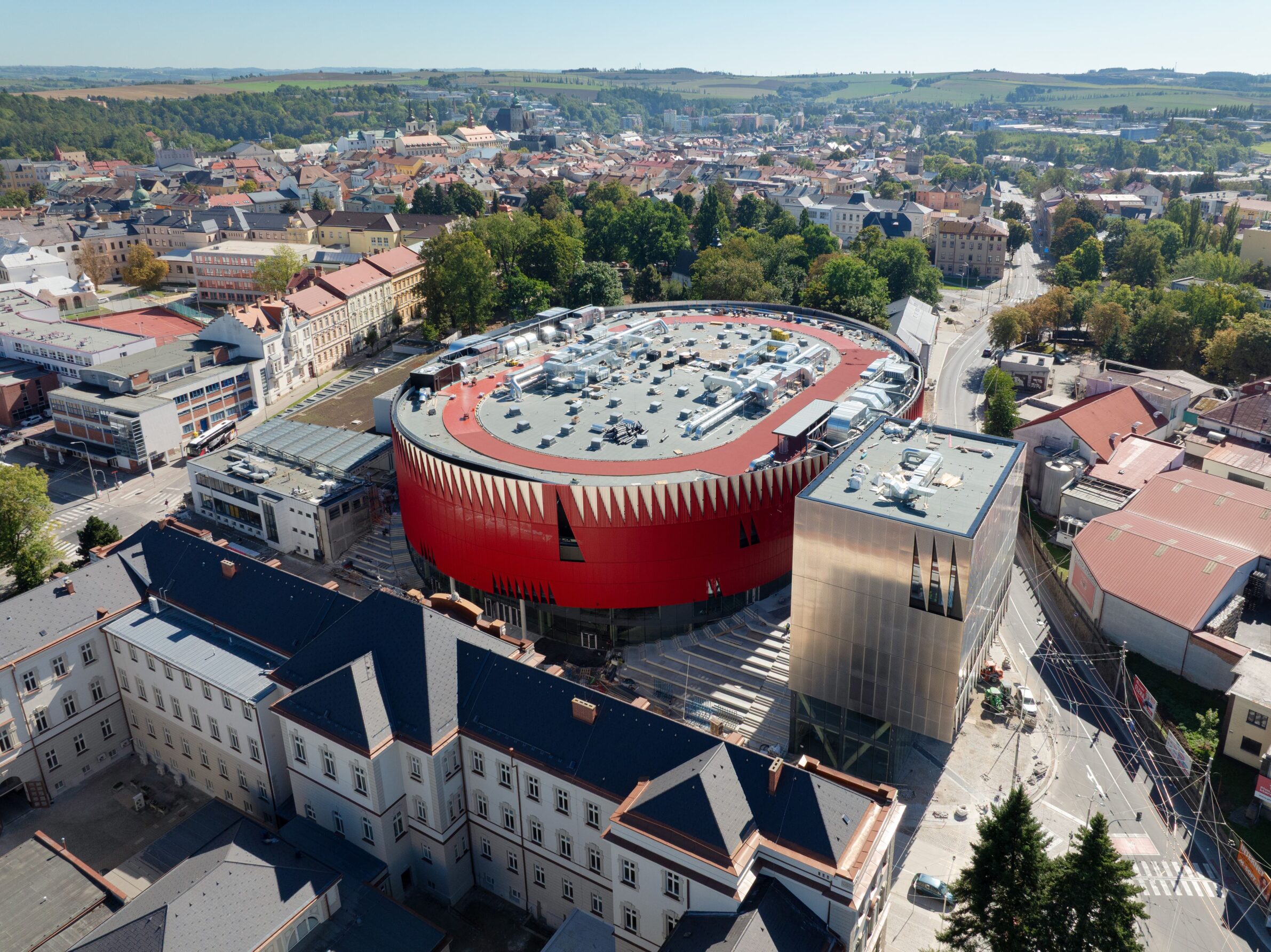
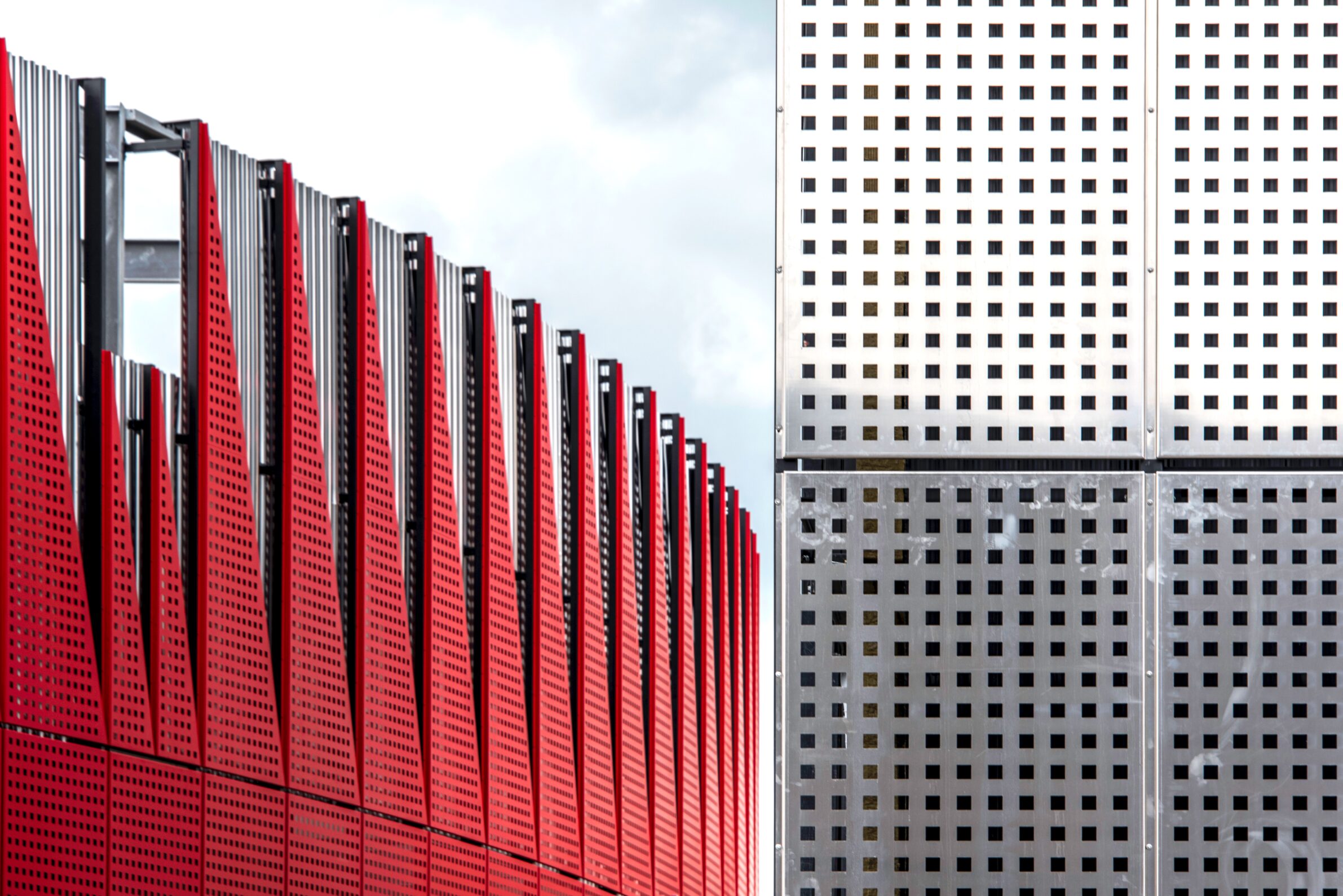
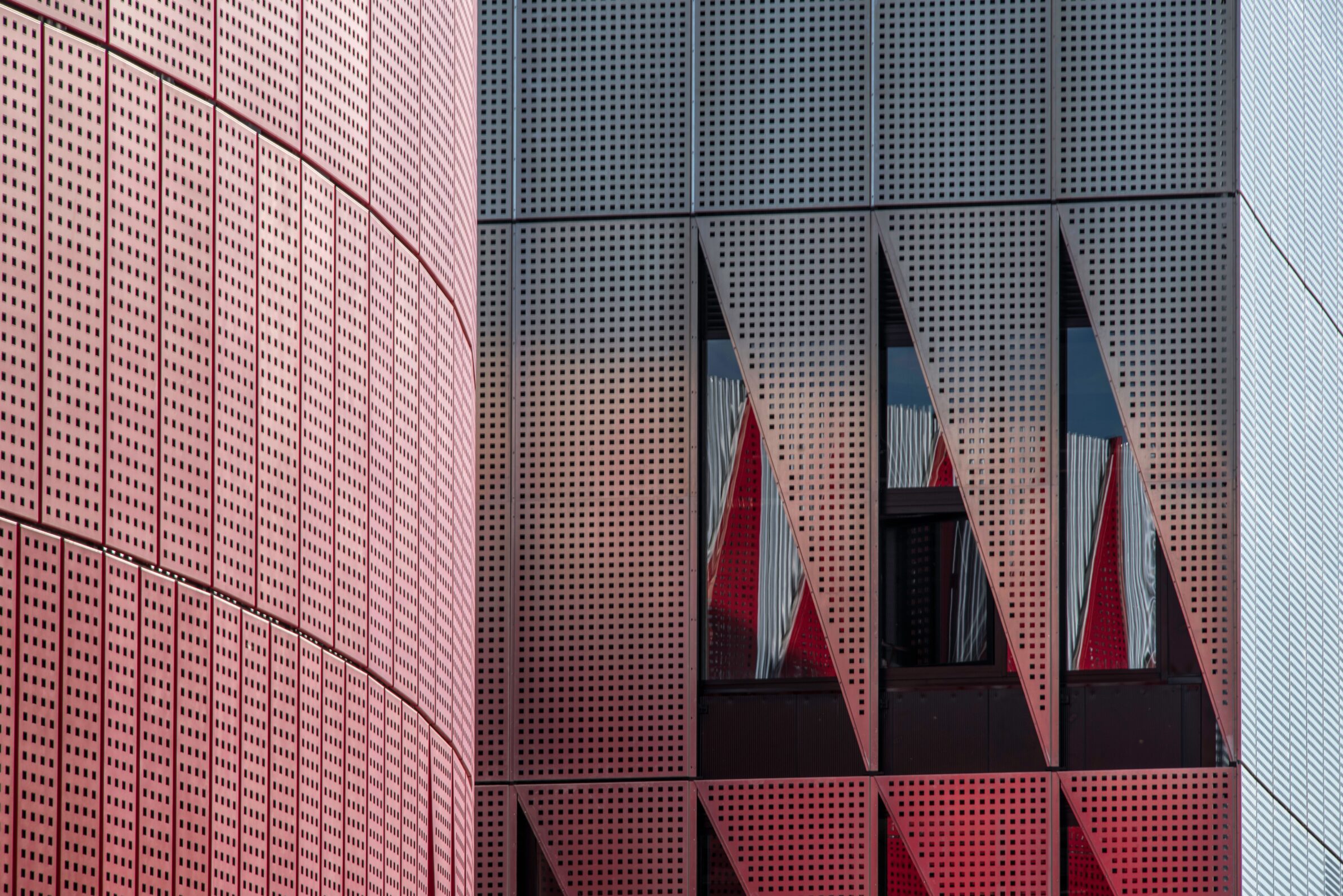
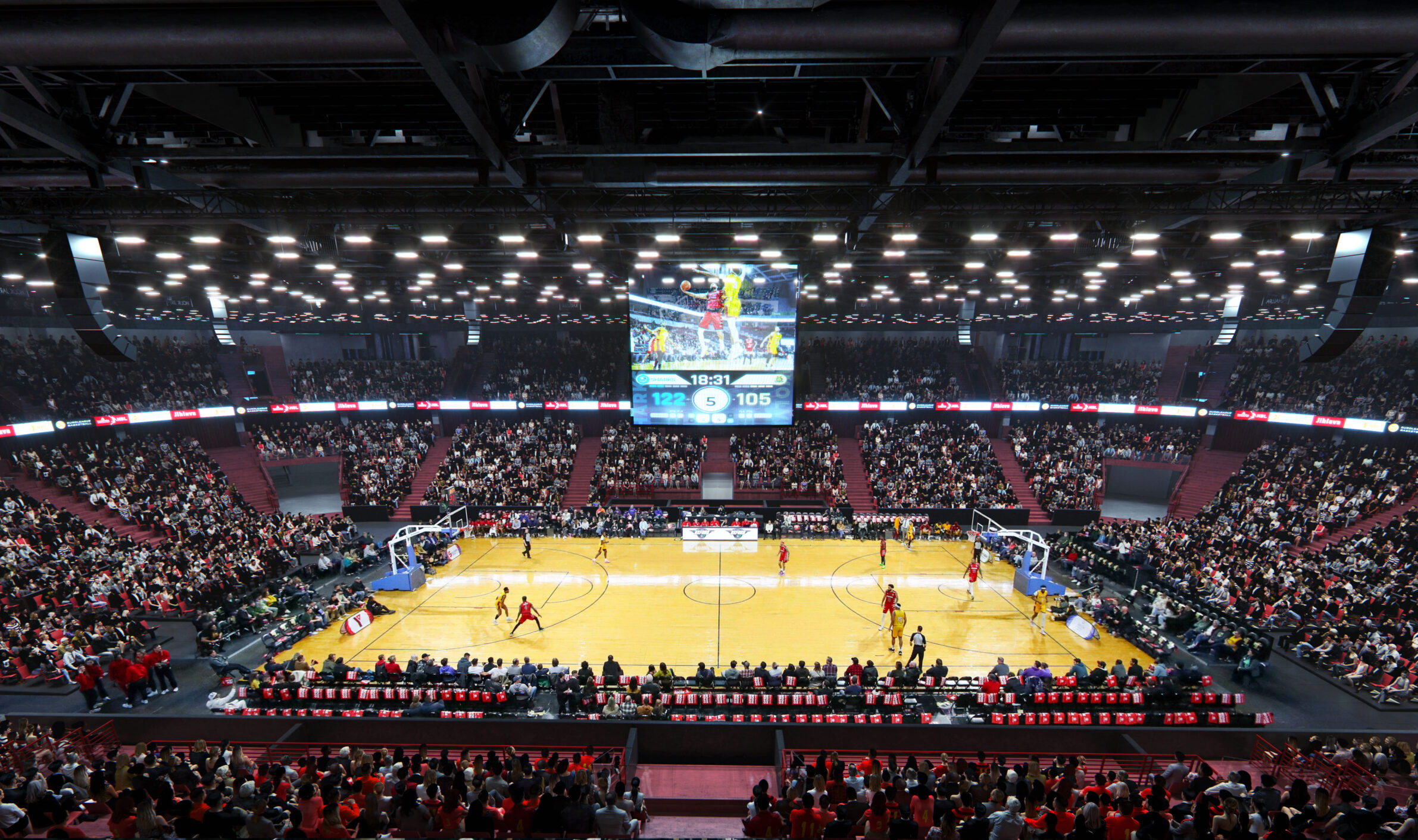
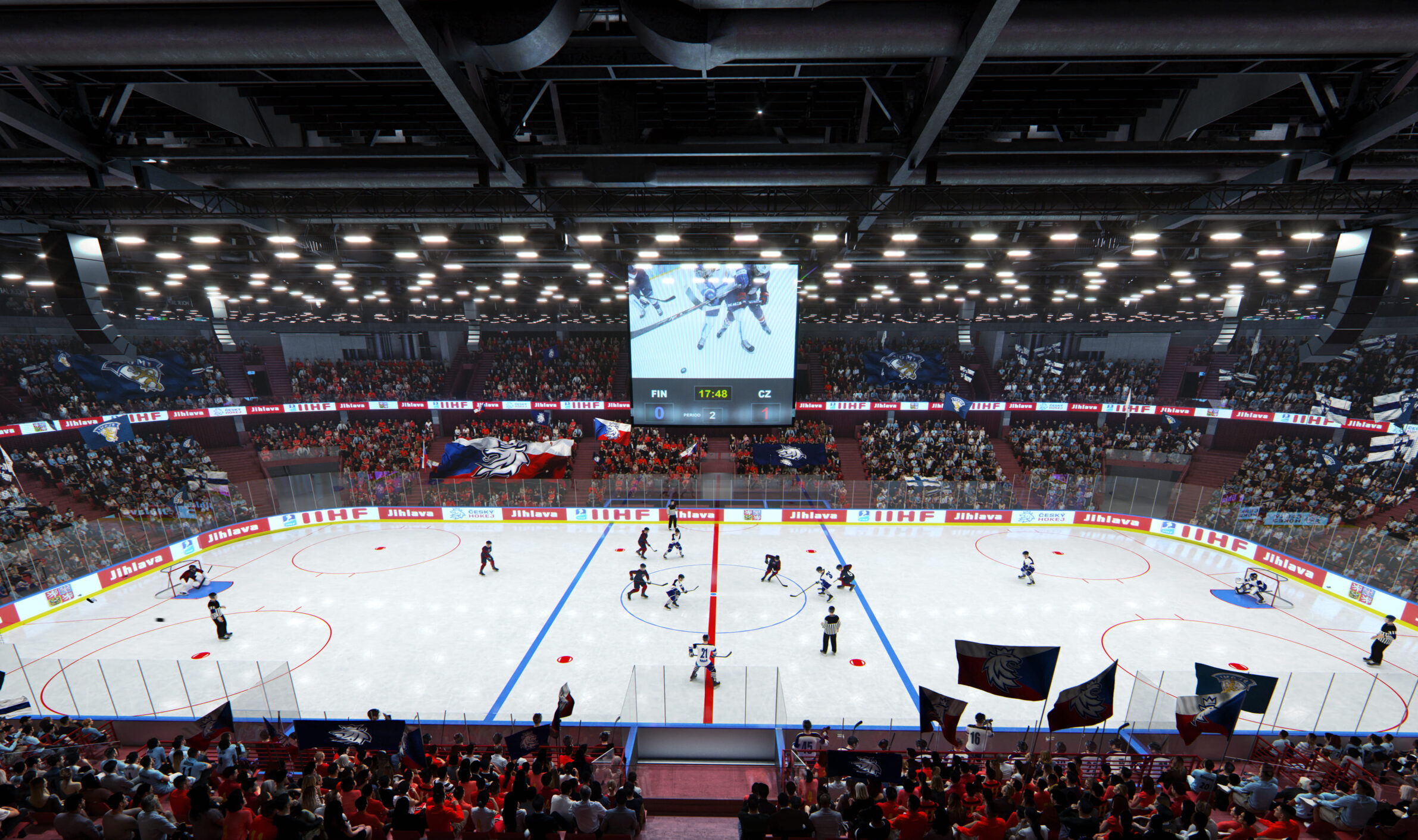
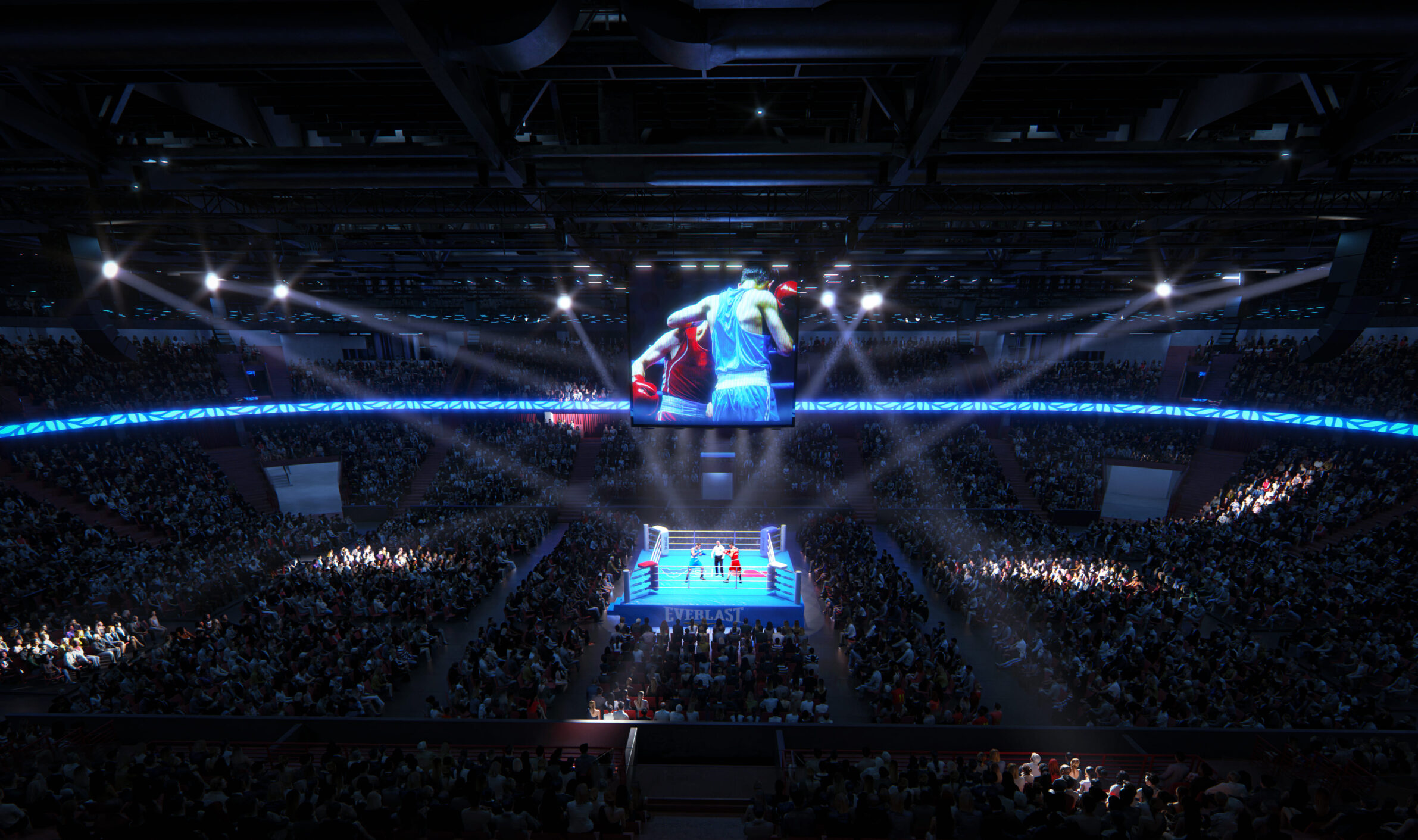

Jiri Richter, Design Director at CHYBIK + KRISTOF
Chybik + Kristof is a studio specializing in architecture and urban design, founded in 2010 by Ondrej Chybik (*1985) and Michal Kristof (*1986). The team operates from offices in London, Prague, Brno, and Bratislava. Combining architecture, urbanism, research, and education, the studio explores the Creative Reuse of Cities as a method for urban transformation, cultural continuity, and responsive design, with the goal of embedding community value into the future of cities worldwide.
Despite being only 15 years old, the studio has completed numerous projects, including 1,700 homes within large-scale mixed-use masterplans. Additionally, 850 units are currently under construction, with over 2,000 more in planning. Their expertise spans all major sectors, delivering cultural and civic landmarks, public spaces, and production facilities such as wineries. The studio is engaged in commissions across major European cities, including London, Tirana, Vienna, Berlin, and Prague. They also participate in temporary activation projects, pavilions, and installations.
Project
Jihlava Arena
Studio:
CHYBIK + KRISTOF
Year of Completion:
2025
Location:
Jihlava, Czech Republic
Portrait Photography:
KIVA
Project Photography:
Pavel Bartak
Renders:
Plomp
Edited by:
Tanja Završki


